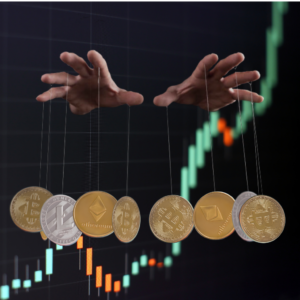The terrorist attacks of September 11, 2001, not only had a profound impact on the lives of countless individuals but also sent shockwaves through the global economy. In the immediate aftermath of 9/11, the business world experienced unprecedented challenges, with major stock market declines, disruptions in key sectors, and the need for new legislation to address the risks associated with terrorism. Let’s take a few minutes to examine the effects of 9/11 on business over the last two decades, using statistical data and historical context to understand the lasting repercussions on various sectors of the economy.
Immediate Market Impact
The first day of trading on the New York Stock Exchange (NYSE) after 9/11 stands as a stark reminder of the economic turmoil that followed the attacks. On that day, the market fell 684 points, representing a 7.1% decline, setting a record at the time for the biggest loss in exchange history for one trading day. At the close of trading that week, the Dow Jones was down almost 1,370 points, marking a loss of over 14%. The Standard and Poor’s (S&P) index also experienced an 11.6% loss. In just five days of trading, an estimated $1.4 trillion in value was lost.
These statistics paint a clear picture of the immediate economic shockwave that rippled through Wall Street and beyond. The airline and insurance sectors, in particular, were hit hard, with American Airlines and United Airlines, whose planes were hijacked for the terrorist attacks, being the hardest hit.
Insurance Industry Challenges
The insurance industry faced a formidable challenge in the wake of 9/11, with claims estimated at approximately $40 billion. While most insurance firms had adequate cash reserves to cover these obligations, the fallout from the attacks led to a critical issue: perceptions of increased risk and soaring premiums made terrorism insurance costly or simply unavailable.
In response to these challenges, the Terrorism Risk Insurance Act was passed, aiming to share losses between the federal government and the insurance industry. This legislation became essential as it allowed insurers to offer terrorism insurance as part of their coverage. Without it, the cost of such coverage would have been prohibitively high for most businesses.
Stock Market and Financial Services Sector
The immediate aftermath of 9/11 also had a significant impact on the financial services sector. Major players like Merrill Lynch and Morgan Stanley saw their share prices plummet, with losses of 11.5% and 13%, respectively. The shock to the financial industry was exacerbated by the ongoing recession following the dot-com bubble burst.
Air Travel and Tourism
The airline industry, already struggling due to the recession before 9/11, faced severe challenges post-attacks. Passenger volume declined significantly, and it took until July 2005 for air travel to return to pre-9/11 levels. Bankruptcies and the discontinuation of routes and destinations further weakened the industry. Government aid was provided, but many airlines still filed for bankruptcy.
Impact on Other Sectors
The impact of 9/11 extended beyond the insurance, financial services, and airline industries. The agricultural sector faced significant financial losses when commodity futures trading was halted temporarily, and cross-border imports of perishable commodities were briefly stopped. Small businesses, especially those near the World Trade Center in Lower Manhattan, suffered major losses. However, government support, including loans and cash grants, helped many of these businesses recover.
Consumer Confidence
Consumer confidence, as measured by the Consumer Confidence Index and the University of Michigan’s Index of Consumer Sentiment, plummeted to levels not seen since the mid-1990s. These indices gauge consumer mood and their inclination to purchase goods and services, reflecting the widespread uncertainty and fear that gripped the nation.
Resilience of the U.S. Economy
Despite the severity of the immediate impact, the U.S. economy demonstrated its resilience in the face of adversity. Within weeks, the Dow Jones, the Nasdaq, and the S&P had recovered their pre-9/11 price levels. The strength and size of the U.S. economy limited the damage primarily to the geographic areas directly affected by the attacks—Manhattan, Washington, D.C., and Virginia.
Long-term Economic Impact
While the immediate economic repercussions of 9/11 were significant, it is essential to note that the attacks did not have the catastrophic and lasting effect that their perpetrators had hoped for. The U.S. economy rebounded relatively quickly.
However, in the years following 9/11, the nation faced various economic challenges, including the wars in Iraq and Afghanistan, heightened security and intelligence efforts, and the ongoing war against terrorism. These factors contributed to substantial expenses that continue to shape the nation’s economic landscape.
Oil Prices in the Wake of 9/11
Crude oil prices surged in the wake of the September 11 attacks, driven by uncertainty and fears that Middle East oil imports would be disrupted. In the immediate aftermath, the price of oil rose significantly, reflecting the nervousness of investors and their flight to safety. Gold prices similarly experienced a notable increase from $215.50 an ounce to $287.
However, within a week, oil prices retreated to approximately their pre-attack levels, as no further attacks occurred, and crude oil deliveries to the U.S. continued unabated. Gold prices also reversed their gains for similar reasons. The resilience of the oil market in the face of a global crisis demonstrated the industry’s ability to recover swiftly.
Long-Term Impact on Oil Prices
Over the past two decades, the oil industry has undergone a remarkable transformation. Crude oil prices have fluctuated significantly, influenced by various factors, including geopolitical events, technological advancements, and changes in global demand.
In the years following 9/11, crude oil prices have remained more volatile than before the attacks. The introduction of hydraulic fracturing, commonly known as fracking, revolutionized the oil industry by unlocking vast reserves of previously inaccessible shale oil. This technological breakthrough played a pivotal role in increasing domestic oil production and reducing America’s reliance on foreign oil.

The impact of fracking on oil prices has been substantial. In 2001, crude oil was trading at approximately $22 per barrel. A decade later, in 2011, the price quadrupled to reach $95.73 per barrel—the highest on record since 1860. This surge was driven by increased global demand and geopolitical tensions in oil-producing regions.
As of September 2019, crude oil prices hovered around $57 per barrel, significantly higher than the pre-9/11 levels but showing the effects of fracking and other market dynamics that have contributed to price moderation. That weight on prices does not have a long-term outlook as the big players in US fracking are bracing for the end of the boom as this finite resources dries up.
The effects of the September 11 attacks on business and oil prices have reverberated over the past two decades. While the immediate economic impact was significant, the resilience of the U.S. economy and the oil industry allowed for a swift recovery.
The oil industry, in particular, has undergone a transformative journey, driven by technological advancements such as fracking. Despite the volatility in oil prices, they have generally remained at levels significantly higher than those observed before 9/11.
The events of 9/11 continue to serve as a reminder of the profound and lasting impacts that geopolitical events can have on the global economy and various sectors. The ability of businesses and industries to adapt and innovate in the face of adversity has been a defining characteristic of the post-9/11 era, shaping the world we live in today.





